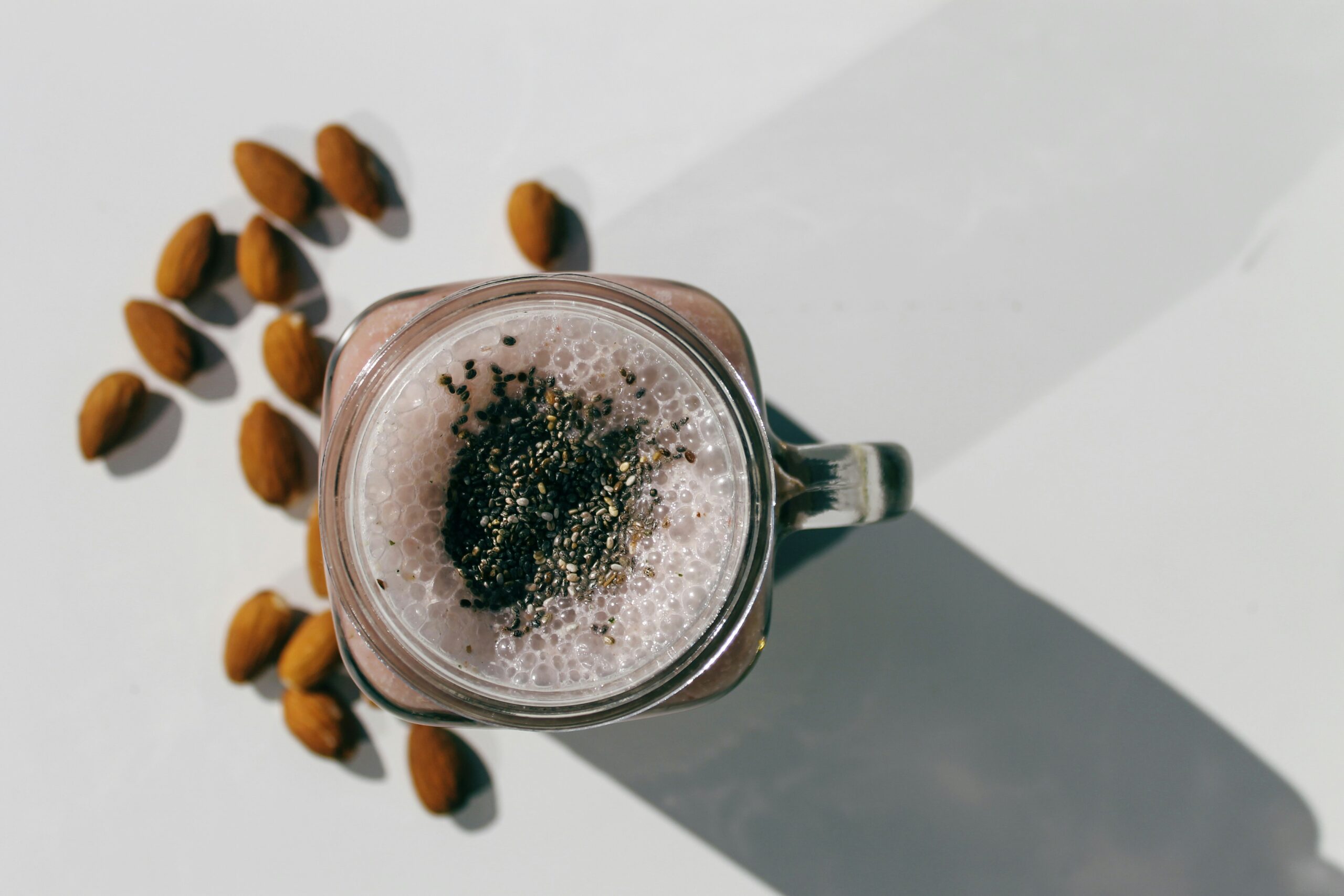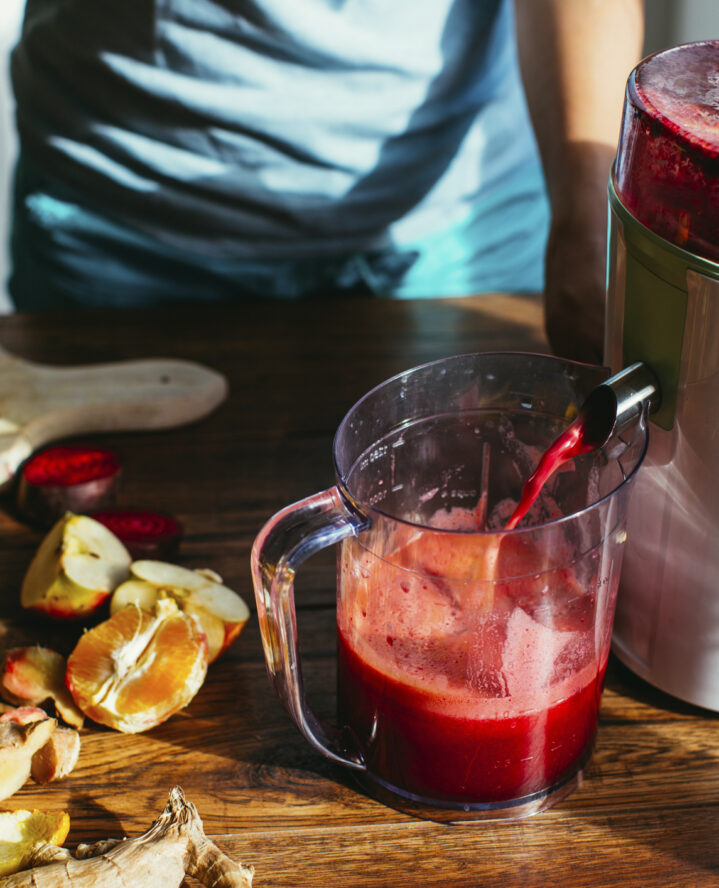If you want to add more fruits and veggies to your diet, juicing is a popular way to do so. And while juicing is a quick and easy way to drink your way to health, the leftover scraps from your juicer can be just as useful.
Instead of discarding these nutrient-rich remnants, there are a myriad of creative ways to turn waste into valuable resources.
Here are six ways to use the leftover fruit and veggie scraps from your juicer.
Make homemade vegetable broth.
If you enjoy cooking, a fantastic way to use up juicer scraps is by making homemade vegetable broth.
When juicing, be sure to keep carrot tops, celery leaves, onion peels, and herb stems. You can simmer them in a pot of water to create a flavorful broth base. After that, remove the solids from your broth before seasoning it with salt and pepper to taste.
And voila! You can use your new, flavorful broth as a base for soups, stews, risottos, and other savory dishes.

Create nutritious smoothies.
Rather than discard your leftover scraps, you can repurpose it for smoothies. This not only adds another layer of flavor, but it adds fiber and other nutrients to the mix, too.
To make a tasty and nutritious smoothie, blend produce scraps with yogurt or plant-based milk, a handful of leafy greens, and your favorite frozen fruit.
The additional fiber from the pulp bulks up the drink to keep you fuller for longer, making your smoothies a fantastic way to start your day or satisfy a midday craving.
Bake healthy treats.
If you have a sweet tooth, you can incorporate your juicer pulp into baked treats like muffins, cookies, and even bread. Not only does this provide you with a healthy dose of fiber, but it adds moisture and flavor, too.
Carrot pulp is especially tasty in carrot cake or muffins, while apple or pear pulp works well in quick bread or oatmeal cookies for added moisture. While this is typically the case, it’s always a good idea to experiment in the kitchen. You never know what mouthwatering creations you come up with!
Feed your garden.
One of the most common ways to repurpose your juicer scraps is to use them in compost bins or worm bins. When you throw your scraps in the trash, they inevitably end up in a landfill, which is bad for the environment.
So instead of contributing to the waste, why not contribute to the environment by adding fruit and vegetable pulp to your compost pile to nourish the soil for your garden?
The organic matter from the pulp helps enhance soil structure, retain moisture, and provide critical nutrients for plant growth so you can reap the benefits of a healthy garden with a spectacular harvest of fruits and veggies for later.

Make a DIY face mask.
Another way to use fruit and vegetable pulp is by adding them to homemade face masks. For example, cucumber contains anti-inflammatory properties that can help soothe and rejuvenate your skin.
You can mix the pulp with a bit of yogurt and honey to create a hydrating mask that calms inflamed or sensitive skin.
Lemon, on the other hand, is a powerful astringent, and using it in your masks can help brighten and tighten your skin.
Create DIY cleaning products.
Fruit and vegetable leftovers are the perfect complement to your homemade cleaning products for your home. Citrus peels, in particular, contain natural oils that work hard to cut through grease and grime.
If you want to make your own homemade cleaning product, simply soak the peels in vinegar for a few weeks. Then, use it to clean your countertops, windows, and other surfaces around your living space.
popular posts
- 1It’s Black Business Month, So Let’s Go Shopping and #BuyBlack!
- 2These Home Decor Items Will Instantly Make Your Space Look Outdated
- 3Black-Owned Home Decor Stores To Support Across the United States
- 4A Look Inside Elon Musk's Tiny $50,000 House
- 57 Black and Multicultural Designers To Follow For Design Inspo
Kitchen

Unique Backsplash Ideas That Add Luxury to Your Kitchen
by Stephanie Taylor | January 19, 2023

These 5 Kitchen Tools Will Up Your Culinary Experience
by Arielle Clay | January 19, 2023
Spaces
Whether it’s luxury or ease, every area of your home should be as fabulous and unique as you.
Here's How You Can Add Wellness Into Your Home's Design
by Kelsey Marie | March 14, 2023
Staying In? These Are The Best Robes For A Luxury Night In
by Kelsey Marie | March 22, 2023
Treat Yourself: 5 Items You Need To Curate An At-Home Spa
by Kelsey Marie | March 19, 2023
FOLLOW ALONG ON INSTAGRAM
#homeandtexture
Find us on social for more home inspiration where culture, personal style, and sophisticated shopping intersect to help you create a home where you love to live.






